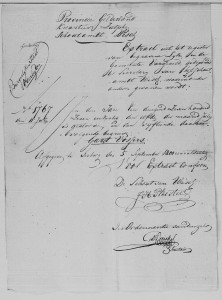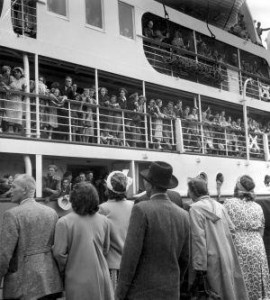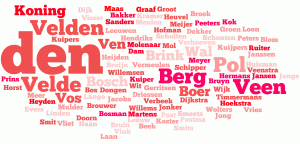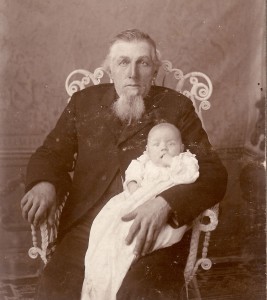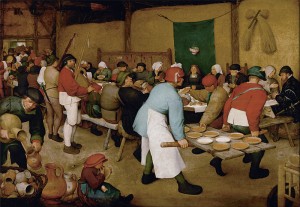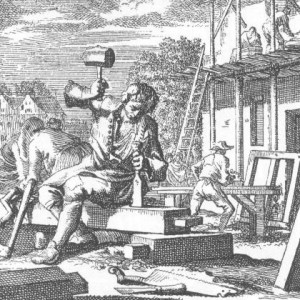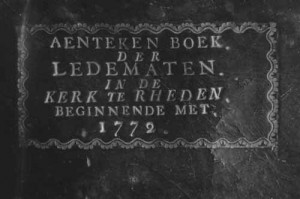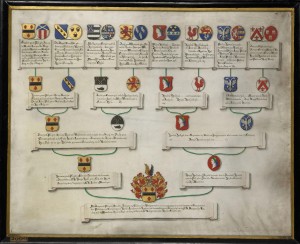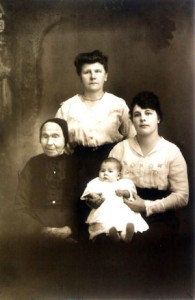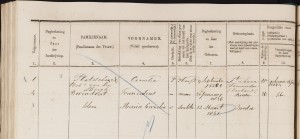Since the introduction of the civil registration in 1811, a bride and groom had to submit several documents to prove they were eligible to get married. Not only do these records tell you when your ancestors were born, but they may also provide information about their physical appearance, death dates of parents and previous spouses or even of their grandparents. These documents are known as the 'Huwelijksbijlagen' and most of them still exist and can be found online. … [Read more...]
Dutch term: Landverhuizer
The word landverhuizer means somebody who moved to another country. It's the term most 19th century records use when referring to emigrants. Knowing this term can help to find lists of emigrants ("staten van landverhuizers") in catalogs of repositories. Read more about landverhuizers in the column "Land movers." … [Read more...]
Top 10 most common Dutch surnames
The ten most popular surnames in the Netherlands in 2007 were De Jong, Jansen, De Vries, Van den Berg, Van Dijk, Bakker, Janssen, Visser, Smit and Meijer. More than 5% of the people in the Netherlands had one of these ten last names. 1. De Jong (86,534 in 2007) De Jong literally means "The Young". Often used when two people in the same family had the same first name. The youngest one would be called De Jong, similar to somebody who is called "junior". Its counterpart, De Oude (the … [Read more...]
Dutch term: schoonvader
The current meaning of the term schoonvader is "father-in-law." In earlier records, the term is used more generally and can also mean stepfather. Just think of the term as "father by marriage," the marriage being either the one to the spouse (making his/her father the schoonvader) or the mother (making her husband the schoonvader). … [Read more...]
Dutch term: ondertrouw
"Ondertrouw" is the event when the banns for a marriage are published. Following the ondertrouw, the marriage is announced three times, at least a week apart (usually on 3 consecutive Sundays). If nobody objects, the marriage is usually performed shortly after the third publication of the banns. Banns were published in the place where the bride and groom lived. If they only lived there shorter than 6 months, they also needed to be published in their previous place of residence. It is not … [Read more...]
Dutch term: knecht
A knecht is a term used to describe the occupation of somebody who works for somebody else. The term does not have an exact English equivalent, but terms like servant, hand, apprentice or assistant come close. Often, the type of knecht is specified, for example timmermansknecht (carpenter's hand), bakkersknecht (baker's hand) or landbouwersknecht (farmhand). Most men started out working as a knecht to learn a trade. Some became masters in their own right, others remained a knecht for the rest of … [Read more...]
Dutch term: lidmaat
The word lidmaat (plural: lidmaten, sometimes ledematen) means member, usually a member of a protestant church. Most protestant became members by confessing around the age of 18-20. Their membership is recorded in the lidmatenboek (church membership book). If they moved, they were given a declaration by their old church so they could become members of another church without having to confess again. … [Read more...]
Dutch term: kwartierstaat
The word kwartierstaat (literally: table of quarters) means ahnentafel, an overview of all ancestors in male and female lines. Many Dutch genealogists publish their kwartierstaat online. Searching for kwartierstaat plus a family name in a search engine like Google may give interesting results. … [Read more...]
Dutch term: jongedochter
"Jongedochter" literally means "young daughter". The term is most often used in marriage records, to indicate that the bride was a spinster; somebody who had not married before. Even though the word jong suggests differently, the use of the term had nothing to do with the age of the bride: even spinsters in their 50s could be called jongedochter. … [Read more...]
Case study: subtle clues in population registers
On the very first day I started doing genealogy, I found a birth record saying that my grandfather’s grandmother was born as an illegitimate child, father unknown. Three years later, her mother married and the groom acknowledged the child as his. The three-year-gap made me dismiss him as her biological father. In the 23 years since then, I’ve collected all documents I could find about this family but never found any viable candidates. Inspired by Dr. Thomas Jones' and Elizabeth Shown Mills' … [Read more...]
